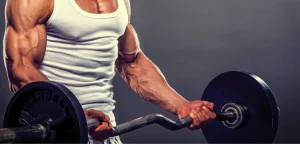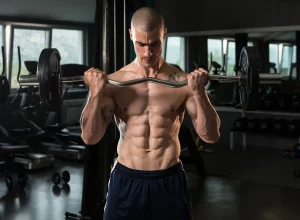Introduction
Definition of maintenance in the context of fitness equipment
Maintenance in the realm of fitness equipment refers to the series of actions undertaken to ensure that gym machines and tools are in optimal working condition. This includes regular inspection, lubrication, cleaning, and repair of any faulty components. By adhering to a strict maintenance schedule, gym owners can prevent major equipment failures, extend the lifespan of their machines, and provide users with safe and effective workout experiences.
When it comes to gym equipment, regular maintenance is not just a suggestion but a necessity. The importance of consistent upkeep cannot be overstated, as it directly impacts the performance and longevity of the machines. Proper maintenance not only keeps the equipment running smoothly but also reduces the risk of injuries to users. Gym owners who prioritize maintenance demonstrate a commitment to providing top-notch fitness experiences for their clientele while also safeguarding their investment in high-quality fitness machines.
Importance of regular maintenance for gym equipment
Understanding the various types of gym equipment is crucial for effective maintenance practices. From strength machines like treadmills and ellipticals to cardio equipment such as bikes and rowing machines, each category requires specific care and attention. Regular inspection, lubrication of moving parts, and checking for wear and tear are essential steps in ensuring that the equipment remains in peak working condition. By addressing maintenance needs promptly, gym owners can avoid costly repairs and downtime, keeping their facility operational and their customers satisfied.
In the realm of gym operations, maintenance and service play a pivotal role. Beyond just fixing broken machines, regular maintenance prevents issues before they occur, saving both time and money in the long run. Gym owners who invest in preventive maintenance programs not only prolong the life of their equipment but also enhance the overall experience for users. By partnering with professional technicians and service providers, gyms can ensure that their fitness machines are always in top condition, promoting safety and reliability for all patrons.
Understanding Gym Equipment
Overview of different types of gym equipment
Gym equipment comes in various forms, catering to different workout needs and preferences. Strength equipment focuses on building muscle mass and includes machines like cable systems, weight benches, and squat racks. On the other hand, cardio machines such as treadmills, ellipticals, and exercise bikes target cardiovascular fitness. Regardless of the type, proper maintenance is essential to ensure that each machine operates efficiently and safely. Regular inspection of cables, bearings, belts, and other components is key to preventing malfunctions and ensuring a smooth workout experience for gym-goers.
Maintaining gym equipment goes beyond just keeping it operational; it directly impacts the performance and longevity of the machines. Regular maintenance not only extends the life of the equipment but also enhances its effectiveness. By adhering to manufacturer guidelines for lubrication, inspection, and cleaning, gym owners can ensure that their machines are in optimal condition. Proper maintenance practices not only prevent unexpected breakdowns but also contribute to a positive gym environment where users can trust that the equipment is safe and reliable.
Importance of maintaining gym equipment for optimal performance
Maintaining gym equipment is crucial for ensuring optimal performance during workouts. Regular upkeep, including inspection, lubrication, cleaning, and repair of fitness machines, is essential to prevent malfunctions and ensure smooth operation. Proper maintenance not only extends the lifespan of gym equipment but also enhances its performance by keeping it in top condition. Gym owners who prioritize maintenance demonstrate a commitment to providing high-quality fitness experiences for their customers while safeguarding their investment in reliable equipment. By maintaining gym equipment for optimal performance, gym owners can create a safe and efficient workout environment that promotes user satisfaction and loyalty.
The Role of Maintenance and Service
Explaining the significance of maintenance and service in gym operations
In the realm of gym operations, maintenance and service are paramount to ensuring smooth and efficient workflows. Regular maintenance of fitness equipment minimizes the risk of unexpected breakdowns, reducing downtime and avoiding disruptions to gym activities. By investing in preventive maintenance services, gym owners can proactively address issues before they escalate, saving both time and money in the long run. Additionally, timely repairs and upkeep contribute to a positive user experience, as patrons can rely on well-maintained equipment for their workouts.
The benefits of regular maintenance extend beyond operational efficiency to encompass user satisfaction and safety. Well-maintained gym equipment not only performs better but also reduces the likelihood of accidents or injuries during workouts. By partnering with professional maintenance services, gym owners can access expertise and resources to keep their equipment in top condition. This proactive approach not only enhances the longevity of fitness machines but also ensures that gym users can enjoy a safe and effective workout environment.
Benefits of regular maintenance for gym owners and users
Regular maintenance of gym equipment offers numerous benefits for both gym owners and users. For gym owners, consistent upkeep helps minimize the risk of equipment breakdowns, reducing repair costs and avoiding disruptions to business operations. By investing in maintenance services, gym owners can prolong the life of their equipment, protect their investment, and uphold a positive reputation for their facility. Additionally, well-maintained machines contribute to a safe workout environment, ensuring user satisfaction and loyalty.
Users also reap the rewards of regular maintenance through enhanced safety and performance during their workouts. Well-maintained equipment operates smoothly, minimizing the risk of accidents and injuries while providing a comfortable and effective exercise experience. Users can trust that the machines are reliable and in optimal condition, allowing them to focus on their fitness goals without concerns about equipment malfunctions. By prioritizing maintenance, gym owners prioritize the well-being and satisfaction of their customers, fostering a positive relationship that benefits both parties.
Types of Fitness Equipment
Categorizing fitness equipment into strength and cardio machines
Fitness equipment can be broadly categorized into strength machines and cardio machines, each serving a unique purpose in a gym setting. Strength machines, such as weight benches and cable systems, focus on resistance training to build muscle strength and endurance. On the other hand, cardio machines like treadmills, ellipticals, and stationary bikes target cardiovascular fitness through activities like running, cycling, or walking. Maintaining these different types of equipment requires specific attention to their unique components, such as belts, pedals, consoles, and bearings, to ensure optimal performance and user safety.
To keep fitness equipment running smoothly, it is essential to follow manufacturer guidelines for maintenance and service. Strength machines may require regular inspections of bolts and cables, lubrication of moving parts, and occasional disassembly for deep cleaning. Cardio machines, on the other hand, often need routine checks of belts and pedals, as well as lubrication of bearings to prevent wear and tear. By addressing the maintenance needs of both strength and cardio machines, gym owners can prolong the lifespan of their equipment and provide a high-quality workout experience for their customers.
Specific maintenance requirements for each type
Different types of gym equipment have unique maintenance requirements that are essential for their optimal performance and longevity. Strength machines such as weight benches and cable systems may need regular inspections of bolts, lubrication of moving parts, and periodic disassembly for thorough cleaning. On the other hand, cardio machines like treadmills and ellipticals often require routine checks of belts, pedals, consoles, and bearings, as well as lubrication to prevent wear and tear. Understanding the specific maintenance needs of each type of equipment allows gym owners to tailor their upkeep practices accordingly, ensuring that all machines operate efficiently and safely.
Repair and Equipment Maintenance
Differentiating between repair and preventive maintenance
In the context of gym equipment maintenance, it is crucial to distinguish between repair and preventive maintenance practices. Repair involves fixing specific issues or malfunctions that have already occurred in a machine, such as replacing a broken belt on a treadmill or repairing a faulty console on an elliptical. Preventive maintenance, on the other hand, focuses on proactively identifying and addressing potential problems before they escalate into major issues. This preventive approach includes tasks such as regular inspections, lubrication of moving parts, and cleaning to prevent wear and ensure optimal functioning of the equipment.
Timely repairs are essential to avoid equipment downtime and maintain a smooth gym operation. By addressing minor issues promptly, gym owners can prevent larger problems that could disrupt workouts and inconvenience users. Preventive maintenance complements repair efforts by reducing the frequency of breakdowns and extending the life of fitness machines. Together, these practices contribute to a well-maintained gym environment where equipment reliability is prioritized, ensuring that users can exercise safely and effectively.
Importance of timely repairs to avoid equipment downtime
Timely repairs are essential to avoid equipment downtime and ensure uninterrupted operation of gym facilities. When issues arise, prompt identification and repair of malfunctions prevent disruptions to workout routines and minimize inconvenience for gym users. By addressing problems swiftly, gym owners can maintain a smooth and efficient gym operation, fostering a positive experience for patrons. Timely repairs not only prevent prolonged downtime but also contribute to a safe workout environment by ensuring that machines are functioning correctly and reliably. Prioritizing timely repairs enables gym owners to uphold a high standard of service and reliability, enhancing customer satisfaction and loyalty.
Implementing Preventive Maintenance
Strategies for implementing preventive maintenance schedules
Implementing preventive maintenance schedules is essential for ensuring the longevity and efficiency of gym equipment. By establishing a regular maintenance routine, gym owners can proactively address maintenance needs before they lead to equipment failures. Strategies for effective preventive maintenance include creating a detailed checklist of tasks for each machine, scheduling routine inspections and cleanings, and keeping thorough records of maintenance activities. By adhering to a structured preventive maintenance program, gym owners can minimize the risk of unexpected breakdowns and optimize the performance of their fitness equipment.
Preventive maintenance not only extends the life of gym equipment but also enhances its overall performance and reliability. By conducting regular inspections, lubrications, and adjustments, gym owners can identify and address potential issues before they impact the functionality of the machines. This proactive approach not only saves time and money on costly repairs but also ensures that gym users have access to safe and well-maintained equipment. Preventive maintenance programs contribute to a positive workout experience for customers, fostering loyalty and trust in the gym’s commitment to providing top-quality fitness services.
How preventive maintenance enhances equipment longevity
Preventive maintenance plays a crucial role in enhancing the longevity of gym equipment by addressing potential issues before they escalate. By conducting regular inspections, lubrications, and adjustments, gym owners can identify and rectify minor problems early on, preventing them from developing into major malfunctions. This proactive approach not only extends the lifespan of the equipment but also reduces the frequency of breakdowns and costly repairs. By implementing preventive maintenance schedules tailored to the specific needs of each machine, gym owners can optimize the performance and durability of their fitness equipment, ultimately maximizing its lifespan and return on investment.
Professional Maintenance Services
Discussing the role of technicians in maintaining fitness equipment
Professional technicians play a crucial role in the maintenance and service of gym equipment. Their expertise and training enable them to identify issues, perform repairs, and conduct preventive maintenance tasks effectively. Technicians are skilled in troubleshooting equipment malfunctions, replacing faulty components, and ensuring that machines are operating at peak performance levels. By partnering with experienced technicians, gym owners can benefit from their knowledge and resources to keep their fitness equipment in optimal condition.
Hiring professional maintenance services for gyms offers numerous benefits, including access to specialized tools and equipment for repairs, timely responses to maintenance requests, and expert advice on equipment upkeep. Technicians can also provide valuable insights on best practices for maintaining specific types of fitness equipment, tailoring their services to meet the unique needs of each machine. By entrusting maintenance tasks to qualified technicians, gym owners can ensure that their equipment runs smoothly, minimizing downtime and maximizing user satisfaction.
Benefits of hiring professional maintenance services for gyms
Regular maintenance of gym equipment offers numerous benefits for both gym owners and users. For gym owners, consistent upkeep helps minimize the risk of equipment breakdowns, reducing repair costs and avoiding disruptions to business operations. By investing in maintenance services, gym owners can prolong the life of their equipment, protect their investment, and uphold a positive reputation for their facility. Additionally, well-maintained machines contribute to a safe workout environment, ensuring user satisfaction and loyalty.
Users also reap the rewards of regular maintenance through enhanced safety and performance during their workouts. Well-maintained equipment operates smoothly, minimizing the risk of accidents and injuries while providing a comfortable and effective exercise experience. Users can trust that the machines are reliable and in optimal condition, allowing them to focus on their fitness goals without concerns about equipment malfunctions. By prioritizing maintenance, gym owners prioritize the well-being and satisfaction of their customers, fostering a positive relationship that benefits both parties.
Gym Equipment Maintenance Best Practices
Providing a comprehensive guide on maintaining various gym equipment
Maintaining various types of gym equipment requires a comprehensive approach that covers different aspects of upkeep. From strength machines like cable systems and weight benches to cardio equipment such as treadmills and elliptical machines, each machine has specific maintenance requirements. Regular cleaning, lubrication of moving parts, inspection of cables and belts, and tightening of bolts are essential tasks to ensure that the equipment remains in optimal condition. By following manufacturer guidelines and creating a maintenance schedule that addresses the needs of each machine, gym owners can prolong the lifespan of their equipment and provide a safe workout environment for users.
Tips for effective equipment upkeep to ensure peak performance include conducting regular safety checks, keeping a clean rag handy for wiping down surfaces, and using silicone lubricant on moving parts. Additionally, gym owners can benefit from establishing routine maintenance routines, performing tune-ups on a bimonthly or quarterly basis, and offering service contracts to ensure consistent upkeep of their fitness machines. By incorporating these best practices into their maintenance protocols, gym owners can uphold the quality and reliability of their equipment, ultimately enhancing the overall gym experience for their customers.
Tips for effective equipment upkeep to ensure peak performance
To maintain peak performance of gym equipment, implementing effective upkeep practices is essential. Regularly inspecting machines for wear and tear, lubricating moving parts, and tightening bolts are fundamental tasks that prevent breakdowns and ensure smooth operation. Gym owners should also establish routine cleaning procedures, wipe down surfaces with a clean rag, and use appropriate lubricants to keep moving parts functioning properly. By incorporating these tips into their maintenance routines, gym owners can prolong the lifespan of their equipment and provide users with a seamless workout experience.
In addition to routine maintenance tasks, offering service contracts on a monthly or bimonthly basis can help ensure consistent upkeep of fitness machines. Service contracts provide peace of mind for gym owners by entrusting maintenance responsibilities to professionals who can address issues promptly and efficiently. By partnering with reliable service providers, gym owners can access expertise and resources to keep their equipment in top condition, reduce downtime, and maintain a high standard of service for their customers. Prioritizing effective equipment upkeep is key to sustaining a successful gym operation and creating a positive experience for users.
Conclusion
Summarizing the key points on fitness equipment maintenance
In conclusion, maintaining fitness equipment is crucial for ensuring its longevity, performance, and user safety. Regular inspection, lubrication, cleaning, and repair of gym machines are essential practices that contribute to a well-maintained gym environment. By understanding the specific maintenance requirements of strength and cardio machines, gym owners can address the unique needs of each type of equipment and prevent costly breakdowns. Implementing preventive maintenance schedules, hiring professional technicians, and following best practices for equipment upkeep are key strategies that can help gym owners maximize the lifespan and efficiency of their fitness machines.
Emphasizing the importance of regular maintenance for a successful gym operation is paramount in fostering a positive user experience and maintaining a reliable workout environment. By prioritizing maintenance and service, gym owners demonstrate their commitment to providing high-quality fitness services while safeguarding their investment in top-notch equipment. Through proactive maintenance efforts and adherence to best practices, gym owners can create a safe, efficient, and enjoyable workout space for their patrons, ultimately contributing to the success and reputation of their fitness facility.




